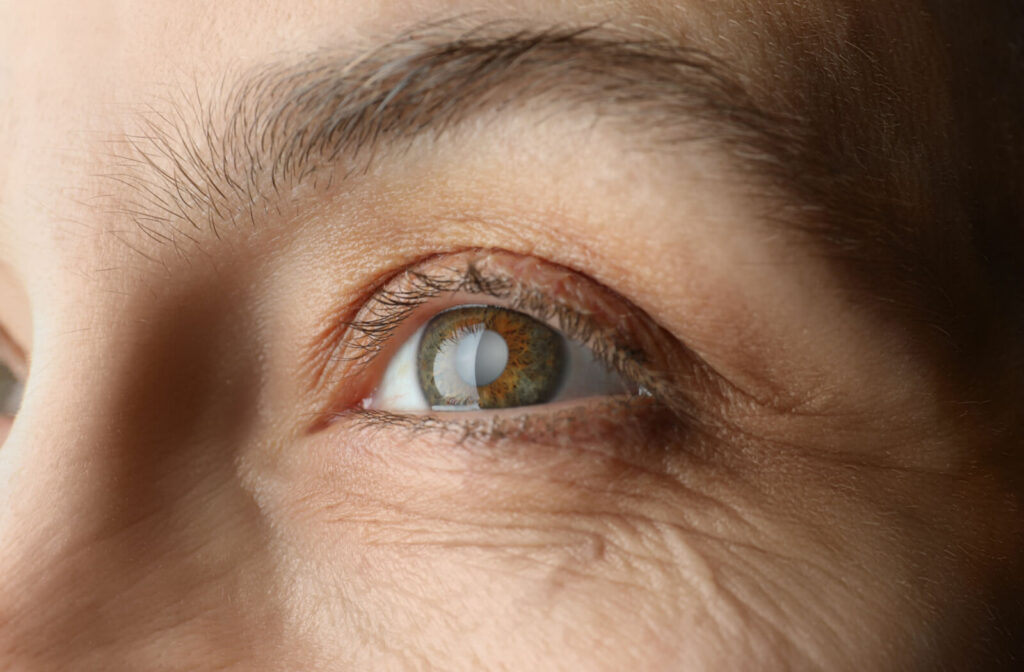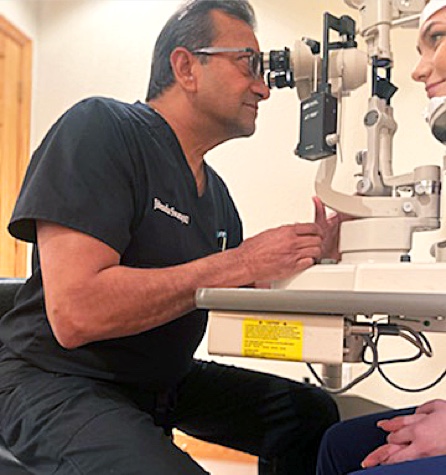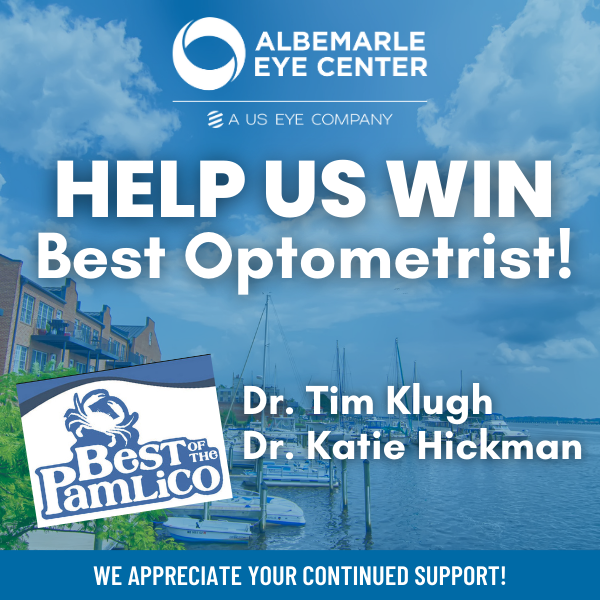Spotting Cataracts
Your eye doctor can detect changes to your eyes during routine eye exams. They’ll also check your overall eye health and monitor for vision problems. Often, the first signs of eye conditions are only visible in microscopic images or discovered using advanced diagnostic technology.
Cataracts can be seen by the naked eye in later stages, but what can you see in the early stages?
There are different types of cataracts, and symptoms can vary depending on the type and development stage. Still, the first sign of cataracts is usually blurry or hazy vision.
Signs & Symptoms
A cataract is when a spot or cloudy area develops in your eye’s clear lens, which sits behind the iris (the colored part of the eye). The lens is flexible and changes shape to control light as it enters the eye, stretching to change focus for near or far distances.
The lens is primarily made of proteins, which can break down and clump together naturally over time. These clumps decrease the lens’s flexibility, causing the tissue to become rigid and opaque and preventing light from entering the eye.
How the cataract impairs your vision depends on its size, location, and thickness. There are several types of cataracts, including:
- Nuclear cataracts form in the middle of the lens, causing the nucleus (center) to become yellow or brown.
- Cortical cataracts appear like streaks around the edges of the nucleus, slowly growing closer to the center.
- Posterior subcapsular cataracts can develop quickly, forming at the back of the lens.
Imagine getting a crack in your car’s windshield. When it first happens, it may be annoying, but you can still see clearly around the thin crack. But the damage can grow and spread, making it more challenging to see around it.
A crack on the passenger side affects your field of view, but you may not notice it looking straight ahead. Conversely, a crack appearing directly in front of you (or central vision) can impact your sight more quickly.
Cataracts can affect your vision in the same way. A nuclear cataract may impair your vision more directly than a cortical cataract, even in the early stages. As cataracts grow or thicken, your vision will become more impaired.
Signs and symptoms of cataracts typically include:
- Blurry or cloudy vision
- Difficulty seeing at night
- Faded or washed-out colors
- Frequent prescription changes
- Lights (& sunlight) seem too bright
- Halos appearing around lights
- Seeing double

What Causes Cataracts?
Aging is the most common risk factor when predicting cataract development. Still, there are additional risk factors that can affect all ages. For example, infants and children can develop pediatric cataracts because of inherited conditions, injuries, and infections.
Other common risk factors include:
- Aging
- Diabetes
- Eye trauma
- Heavy alcohol consumption
- High blood pressure
- Medication side effects
- Poor diet & nutrition
- Obesity
- Smoking
- Sun damage
Cataracts vs. Presbyopia
At a glance, presbyopia may seem similar to cataracts. Both usually develop because of natural lens changes as we age, and both cause blurry vision. However, there are 2 significant differences:
- Presbyopia only affects close vision (like reading), whereas cataracts can cause cloudy vision at all distances.
- Presbyopia can significantly impair vision, but it won’t cause complete blindness. Cataracts are a leading cause of blindness in older adults.
There is no way to reverse the natural changes causing presbyopia or cataracts. But patients can control or limit some of the additional risk factors contributing to the lens changes. Additionally, there are many management methods to help improve vision, for presbyopia and cataracts.
Talking to your eye doctor and receiving a diagnosis as soon as possible can help ensure you receive appropriate care.
Managing Cataracts
There are many management solutions to improve vision problems occurring in the early stages of cataracts. Glasses or contact lenses are an accessible way to sharpen blurry vision, but you may need frequent prescription updates as the cataract changes.
Adding more light sources to indoor environments can also improve your vision, and anti-glare filters, sunglasses, or prescription lenses can help reduce light sensitivity or halos.
However, these nonsurgical methods can become ineffective if your cataracts progress and symptoms worsen.
Laser cataract surgery is an outpatient procedure that replaces your natural lens with an artificial intraocular lens implant (IOL). The natural lens is broken into pieces with a femtosecond laser so the incision can remain small for faster recovery. Once the lens is broken, the pieces are then properly removed. Our experienced team can usually complete the procedure with the LenSx system in 6–8 minutes. Most of our patients notice improved vision within 24 hours.
Removing the natural lens eliminates the risk of cataracts developing again. There are also multiple types of lens implants to enhance your vision. Multifocal IOLs improve near, intermediate and far distance vision. Depending on the lens chosen, patients may no longer require corrective lenses to see clearly.
Discuss Your Options
More than half of Americans develop cataracts by age 80.
When you notice the first signs or symptoms, visit Albemarle Eye Center. We want to help you preserve your vision. Talk with our eye doctors to learn about your management options. Book your appointment today!




















